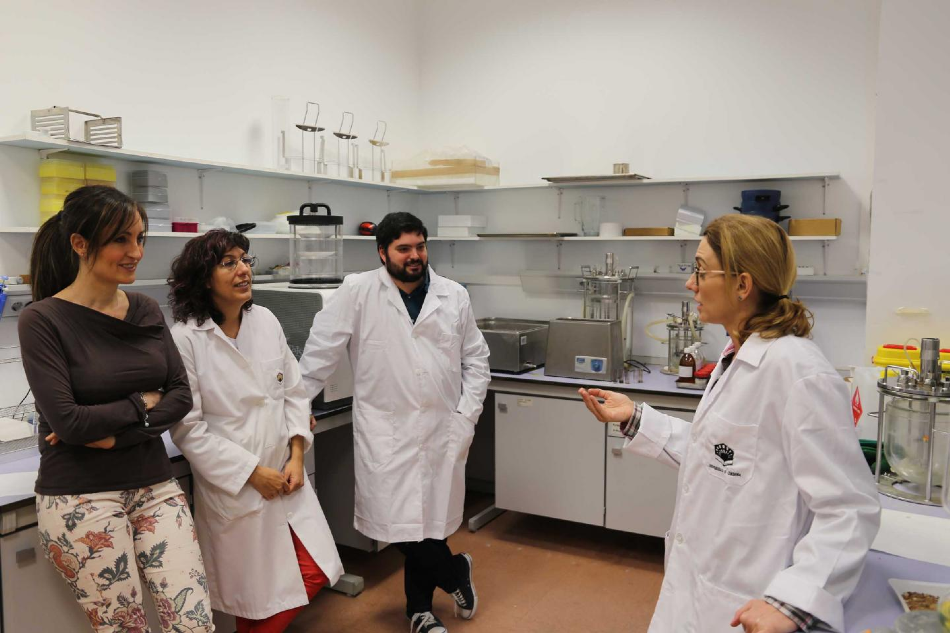Apr 2 2020
Over one-third of the food produced is currently being wasted. Such a scenario leads to ethical, financial, and environmental problems that also impact food security.
 The researcher team at the University of Cordoba. Image Credit: University of Cordoba.
The researcher team at the University of Cordoba. Image Credit: University of Cordoba.
Negative impacts from waste management such as emission of greenhouse gases or bad smells, make bioeconomy one of the most optimal options to minimize these problems. Investigations in the field of the bioeconomy and the quest for waste valorization methods—such as agricultural by-products—is the area of focus for the BIOSAHE (a Spanish acronym of biofuels and energy-saving systems) research group at the University of Cordoba. Under the guidance of Professor Pilar Dorado, the scientists have now taken their research to the next level.
At the University of Cordoba, the scientists are aiming to determine the most optimal valorization paths for restaurant food scraps. Among the potential lives for restaurant scraps, the group is trying to find which one offers the most value and which one is highly effective.
As such, Miguel Carmona, a researcher, and the rest of the BIOSAHE group that includes Javier Sáez, Sara Pinzi, Pilar Dorado, and Isabel López García, devised a technique that evaluates food waste and picks the best valorization path.
Following the analysis of food waste from many different kinds of restaurants with differing degrees of caliber, the primary chemical components, such as fibers, lipids, proteins, and starches, were characterized.
The main objective of this process was to identify the types and the amounts of compounds that are retained in food waste to connect it to the most optimal option for its conversion.
After identifying the scraps’ chemical compounds, the researchers carried out statistical analysis to investigate the variability (that is, how compounds differ and the amounts of certain waste as opposed to the other waste).
By Identifying variability and compound typology, the best valorization process can be predicted based on the waste, thus aiding industries within the resource valorization sector and the circular economy to make informed decisions.
In this manner, the lives of restaurant scraps can be converted into electricity, bioplastic, or biodiesel. Particularly, the project headed by Pilar Dorado is building a biorefinery, which, just like how oil refineries do, would generate bio-lubricants, bioplastic, biofuel, and products with added value in the heat, electrical, and chemical industries from restaurant food scraps.
Apart from the technique that defines scraps and selects the most optimal paths, the researchers have created bioplastic in this study. This bioplastic can be utilized as sutures in surgical procedures.